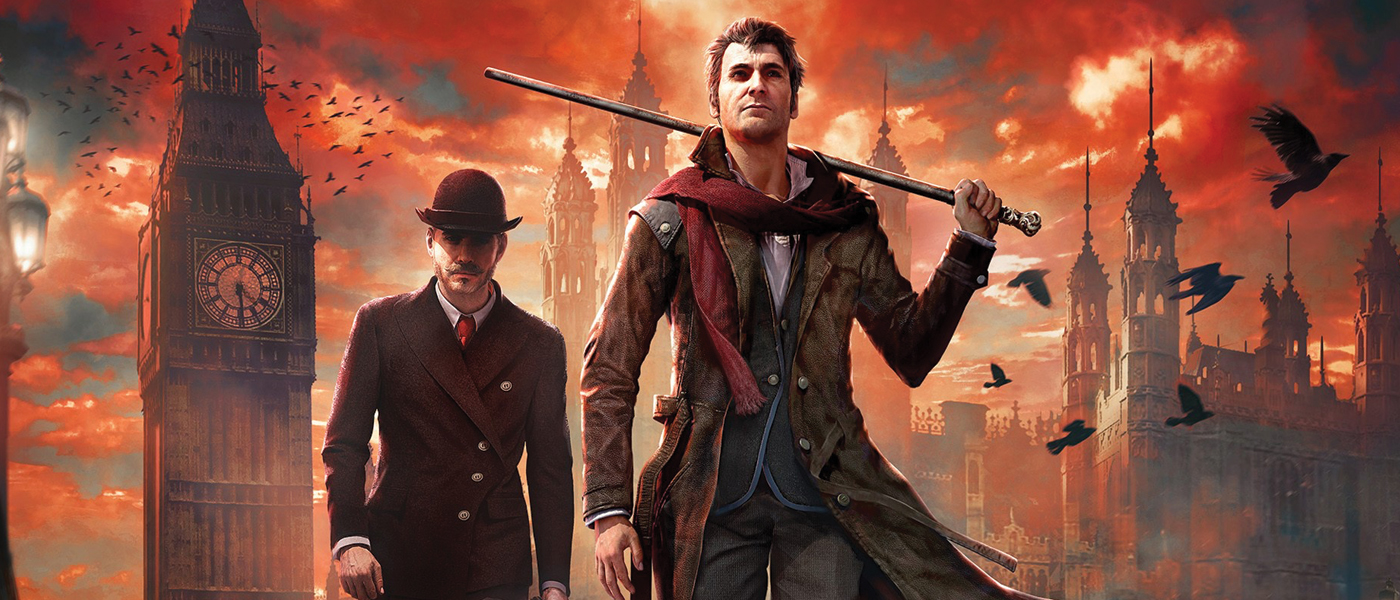 Sherlock Holmes: The Devil’s Daughter follows the same formula as previous Sherlock Holmes games. Much like Crime and Punishment that came before it, it presents individual cases that are barely connected and sees players attempting to solve them and come to a conclusion which can be either right or wrong. Overarching these cases is a storyline involving Holmes’ adoptive daughter, her true parents and a mysterious new neighbor.
Sherlock Holmes: The Devil’s Daughter follows the same formula as previous Sherlock Holmes games. Much like Crime and Punishment that came before it, it presents individual cases that are barely connected and sees players attempting to solve them and come to a conclusion which can be either right or wrong. Overarching these cases is a storyline involving Holmes’ adoptive daughter, her true parents and a mysterious new neighbor.
The story is genuinely interesting if not slightly predictable – but the tidbits of the overarching story that are woven into the game throughout the cases are interesting enough to keep you playing, even if they do result in a bit of an anticlimactic finale. It’s not that the story is blatantly terrible, it’s just that it feels like fairly standard Sherlock Holmes fare.
Having spent a good amount of time finishing similar games of this caliber, including those within this very series, the twists and turns the story takes won’t be anything new. It’s almost like this type of fiction sticks to the same old tropes and conventions, which results in story that is largely unsurprising or shocking. The premises are ostensibly high-concept but ultimately pedestrian.
The writing is still fairly decent, though, and despite the game being tonally all over the place it still comes together to be a cohesive piece of work. Sherlock himself is portrayed similarly to past games – intelligent yet borderline sociopathic with some of the riskier decisions he makes during his investigations. There’s some moments of levity – some comedic sequences with both his daughter and other people he meets during his investigations but it leaves us asking a question. Why bother changing this rendition of Sherlock Holmes if his behavior is still largely similar? Essentially, this re-imagining seems to be a purely cosmetic one and that feels like a largely missed opportunity.
 One of the things I find charming about the Sherlock Holmes games is that they’ve never been about wowing the players with their visual presentation. There’s been some leaps and bounds between instalments to improve the visuals but the games have never looked that great. Unfortunately, even though it’s available exclusively on the newer wave of consoles, The Devil’s Daughter still is as unpolished as and, quite frankly, ugly as other games in the franchise. Running on a customized and aging Unreal Engine 3, the game attempts to make the visual presentation of the game “bigger” but with grave concessions.
One of the things I find charming about the Sherlock Holmes games is that they’ve never been about wowing the players with their visual presentation. There’s been some leaps and bounds between instalments to improve the visuals but the games have never looked that great. Unfortunately, even though it’s available exclusively on the newer wave of consoles, The Devil’s Daughter still is as unpolished as and, quite frankly, ugly as other games in the franchise. Running on a customized and aging Unreal Engine 3, the game attempts to make the visual presentation of the game “bigger” but with grave concessions.
It’s easy to run through a list of the issues plaguing Devil’s Daughter – whether it be the horrendous screen tearing, the unstable and uneven framerate or the nightmare inducing lifeless character models that closer resemble The Stepford Wives than actual people. But there’s still a kind of gritty, dirty charm to it. Victorian era London is now completely free roam and feels authentic and atmospheric – though we’re not quite sure why. Imagine a city in Fable except without the whimsy or witticism. Instead you can pick up the paper each day, engage in arm wrestling with the street folk or knock on doors that don’t answer. It’s an intimate depiction of the locale but also one that feels completely pointless.
Perhaps even more disappointing and noticeable is the disparity between the character models and the voice work. The character models are truly shocking in some instances – staring at you with dead eyes while cycling through canned animations to give them the illusion of life while vacantly sapping your soul with their lifeless gaze. But the voice work is fairly passable. The characters all sound good, they just don’t look good. This problem is further exacerbated with poor lip syncing as well – which quite simply doesn’t ever match up with the dialogue being spoken on screen.
The ultimate disappointment with The Devil’s Daughter isn’t not just how average it looks but how long it takes to load into the game. This is somewhat mitigated by the fact that you can look over your case file or draw conclusions while in a horse carriage as your game loads – but the load times are truly shocking. Some can be upward of thirty seconds – and even then the end result is a locale that is small without more than one critical path.
 The Devil’s Daughter plays like a modernized rendition of the point and click game. At the beginning of each case Sherlock and Watson will be given a case to investigate or will watch a case eventually unfold. You’ll almost always open the case by profiling the witness or person you first come into contact with by examining their body language, clothing and other minute details. Eventually you’ll build an evidence base from a myriad of mini-games and puzzles as well as these interviews and observations to build a case and ultimately come to a conclusion.
The Devil’s Daughter plays like a modernized rendition of the point and click game. At the beginning of each case Sherlock and Watson will be given a case to investigate or will watch a case eventually unfold. You’ll almost always open the case by profiling the witness or person you first come into contact with by examining their body language, clothing and other minute details. Eventually you’ll build an evidence base from a myriad of mini-games and puzzles as well as these interviews and observations to build a case and ultimately come to a conclusion.
Examining people you interview up close is one of the more interesting elements of The Devil’s Daughter. As you pan your view across an interviewee, you’ll notice details. Some provide one outcome. Others need players to make a choice – is the woman’s piece of jewelry just eccentric or linked to satanic ritual? Are the boys eyes red because of conjunctivitis or because he’s tired or crying? Sherlock (ie. you) must make a decision and then use this to build a character portrait.
The benefit of such is that it provides information for Sherlock to interject with during conversations or make deductions with. The more interesting implication of this is that you can get it wrong and be lead down the wrong path. Interject with the wrong piece of information and a trail or conversation will go cold and be shut down – leading to a missing clue in your investigation. Thankfully, most conclusions, when considering all the evidence at your disposal, can be arrived at with a few decent thoughts and nothing ever feels random or unsubstantiated.
Collecting these clues can be done through multiple ways. Some are fun, some are nothing more than clicking here and there while others actually need you to use your brain and even make you feel smart(er?) too. Clues can then be tied together to make deductions – some of which have multiple. Does the shooter want to get revenge for a past event or is he simply a violent, merciless murderer?
Your deductions and conclusions are displayed on the Deduction Board which is modelled as a brain with neurons that extend and grow as Sherlock fits more clues together. If your conclusions are incompatible or logically fallacious, these neurons will clearly not connect. It’s rewarding to see your entire case come together and connect on the deduction bored, though also deflating to know you might choose the wrong conclusion.
Conclusions can then be come to and (for reasons unknown) Sherlock can choose which moral path to go down – to punish the culprit or absolve them. A feature new to The Devil’s Daughter, this morality system is interesting but ultimately the same omnipresent morality system that appears in every other game. That is, the outcomes are not all that important. You’ll unlock “Echoes” which are essentially text epilogues. They’re a nice touch, but they really don’t add anything to the game. We will admit that it was hard in almost every case to come to a conclusion without having to think about the plausibility of each one in detail – and in that regard the game is truly successful. But once you’ve decided a conclusion it’s rarely hard to decide what to do with the culprit.
One aspect of The Devil’s Daughter that is absolutely worth talking about is the puzzles, which can get pretty damn hard. The usual detective work is here – but the more abstract of puzzles are easily the standouts here. Early in the game you’ll have to use symbols to translate an ancient Mayan dialect. It’s intriguing and not something you’ll do in every game, and it’s pretty damn hard.
But the developers have included an option to skip these though we’d question why you’d even bother – isn’t that the point? Perhaps not, as some of these moments do feel poorly programmed and might be skipped out of pure frustration. Those longing for the harder puzzles of the adventure games of yesteryear like Gabriel Knight and Zork will enjoy what The Devil’s Daughter has to offer.
 Sherlock Holmes: The Devil’s Daughter feels about on par with previous games in the series. The technical aspect of the game is easily its weakest component – the framerate is shocking, the character models are ugly and the screen tearing is impressively bad. But there’s still something about The Devil’s Daughter that is endearing. Perhaps it’s the fact that it provides interesting, if not cliché stories through the lens of the legendary Sherlock Holmes.
Sherlock Holmes: The Devil’s Daughter feels about on par with previous games in the series. The technical aspect of the game is easily its weakest component – the framerate is shocking, the character models are ugly and the screen tearing is impressively bad. But there’s still something about The Devil’s Daughter that is endearing. Perhaps it’s the fact that it provides interesting, if not cliché stories through the lens of the legendary Sherlock Holmes.
Perhaps it’s the fact that a game of this scope and style provides a breath of fresh air in an industry oversaturated with homogenous products. It’s hard to say. The Devil’s Daughter definitely isn’t a perfect game. But it’s a great little adventure game with solid writing and solid gameplay marred by a numberless technical issues.
The Xbox One version of Sherlock Holmes: The Devil’s Daughter was primarily tested for the purpose of this review



